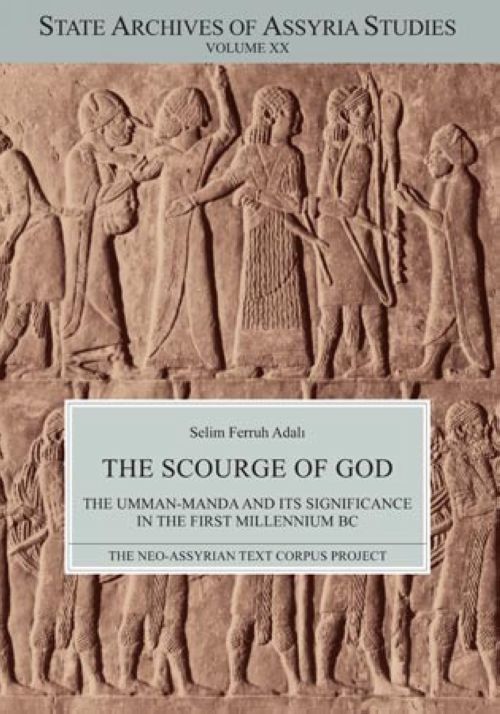Rendered at 12:30:17 05/30/25
The Scourge of God The Umman-manda and Its Significance in the First Millennium
$98.00
Ships from
Finland

Shipping options
Offer policy
OBO - Seller accepts offers on this item.
Details
Return policy
Refunds available: See booth/item description for details
Purchase protection
Payment options
PayPal accepted
PayPal Credit accepted
Venmo accepted
PayPal, MasterCard, Visa, Discover, and American Express accepted
Maestro accepted
Amazon Pay accepted
Nuvei accepted
Shipping options
Offer policy
OBO - Seller accepts offers on this item.
Details
Return policy
Refunds available: See booth/item description for details
Purchase protection
Payment options
PayPal accepted
PayPal Credit accepted
Venmo accepted
PayPal, MasterCard, Visa, Discover, and American Express accepted
Maestro accepted
Amazon Pay accepted
Nuvei accepted
Item traits
| Category: | |
|---|---|
| Quantity Available: |
10 in stock |
| Condition: |
New |
| Publisher: |
Neo-Assyrian Text Corpus Project |
| Language: |
English |
| Binding: |
Paperback |
| Category: |
Classical history and classical civilisation |
| Pages: |
222 |
| Era/Year: |
2011 |
Listing details
| Seller policies: | |
|---|---|
| Shipping discount: |
Shipping weights of all items added together for savings. |
| Posted for sale: |
More than a week ago |
| Item number: |
1618293110 |
Item description
Sent by Ruslania.com promptly from Helsinki, Finland.Description:State Archives of Assyria Sudies. Volume XX
Who were the Umman-manda? This is a question that has vexed Assyriologists since the early days of the discipline, particularly because the question has different answers at different times and in different places: Hurrians, Elamites, Medes, Cimmerians, Scythians-all have been cast as the Umman-manda by various peoples at various times.
With intractable questions such as this, it is useful on occasion to recapitulate all the evidence that applies to the question, to integrate new evidence that has appeared since the last recapitulation, and to see if a new synthesis of the evidence is possible. In this work, Adali does precisely that. After collecting all the textual references to the Umman-manda, the author analyzes the writings, surveys the eytmologies proposed for the term Umman-manda over the years, and finally offers a new proposal for the etymology. He then investigates the nonliterary texts that mention the Umman-manda, seeking clues to their origins and ethnic makeup, finding, as others have, that the evidence is inconclusive and sometimes even contradictory.
Turning to the literary texts as a source for the Umman-manda, the author finds more fertile ground. Leaving aside the potential historical kernel of the Cuthaean Legend of Naram-Sin because the available evidence does not speak to this issue, Adali turns his investigation to the Umman-manda as a lit
erary topos. By investigating the motifs and terminology used in the Cuthaean Legend and comparing them with similar usage in other literary works, the author is able to establish a leitmotif for the Umman-manda and then identify this leitmotif in the royal inscriptions of Assyrian and Babylonian kings.
While the question of who the original Umman-manda were remains a mystery, Adali's work offers new insights and a new outlook on the significance of the Umman-manda in the first millennium and particularly on the question of why the Umman-manda meant different things to different people at different times while, nevertheless, not all enemies were referred to as "Umman-Manda." It provides a new departure point for further investigations of the Umman-manda as well as for the use of literary allusions in both Assyro-Babylonian literature and royal inscriptions.
The Neo-Assyrian Text Corpus Project.
State Archives of Assyria Studies. Volume XX
Added to your wish list!

- The Scourge of God The Umman-manda and Its Significance in the First Millennium
- 10 in stock
- Price negotiable
- Handling time 5 days. Estimated delivery: Thu, Jun 26th
- Returns/refunds accepted
Get an item reminder
We'll email you a link to your item now and follow up with a single reminder (if you'd like one). That's it! No spam, no hassle.
Already have an account?
Log in and add this item to your wish list.



